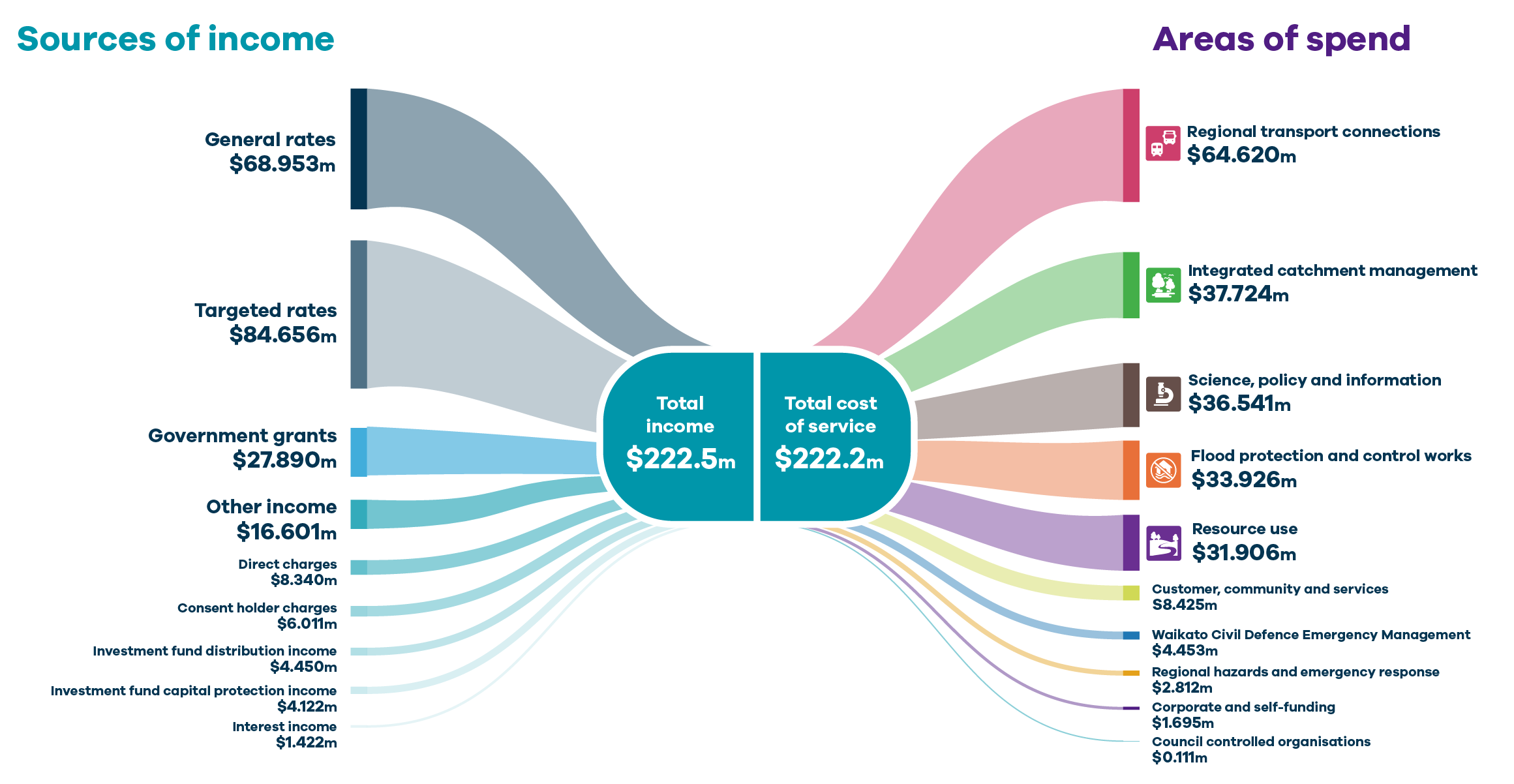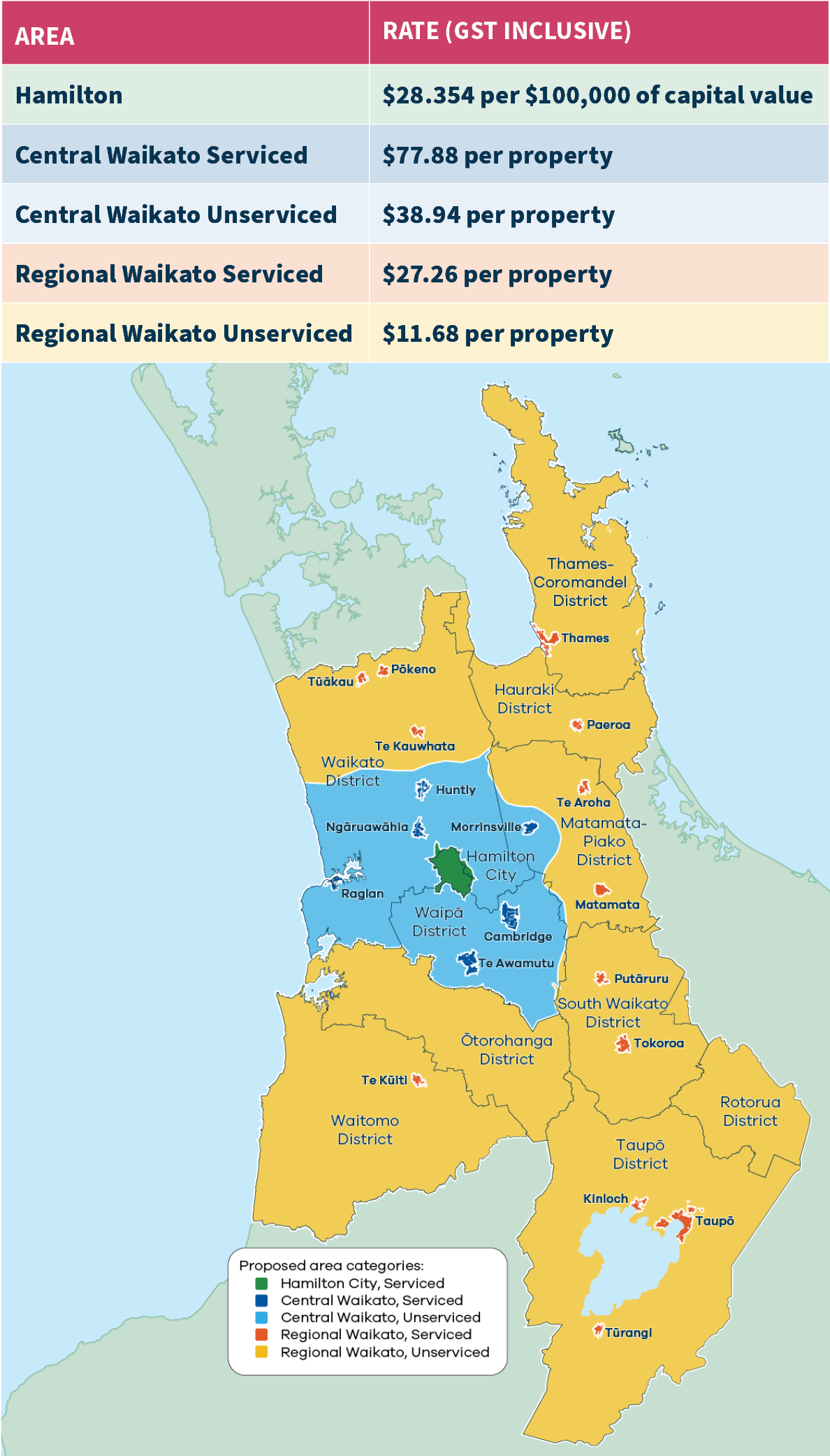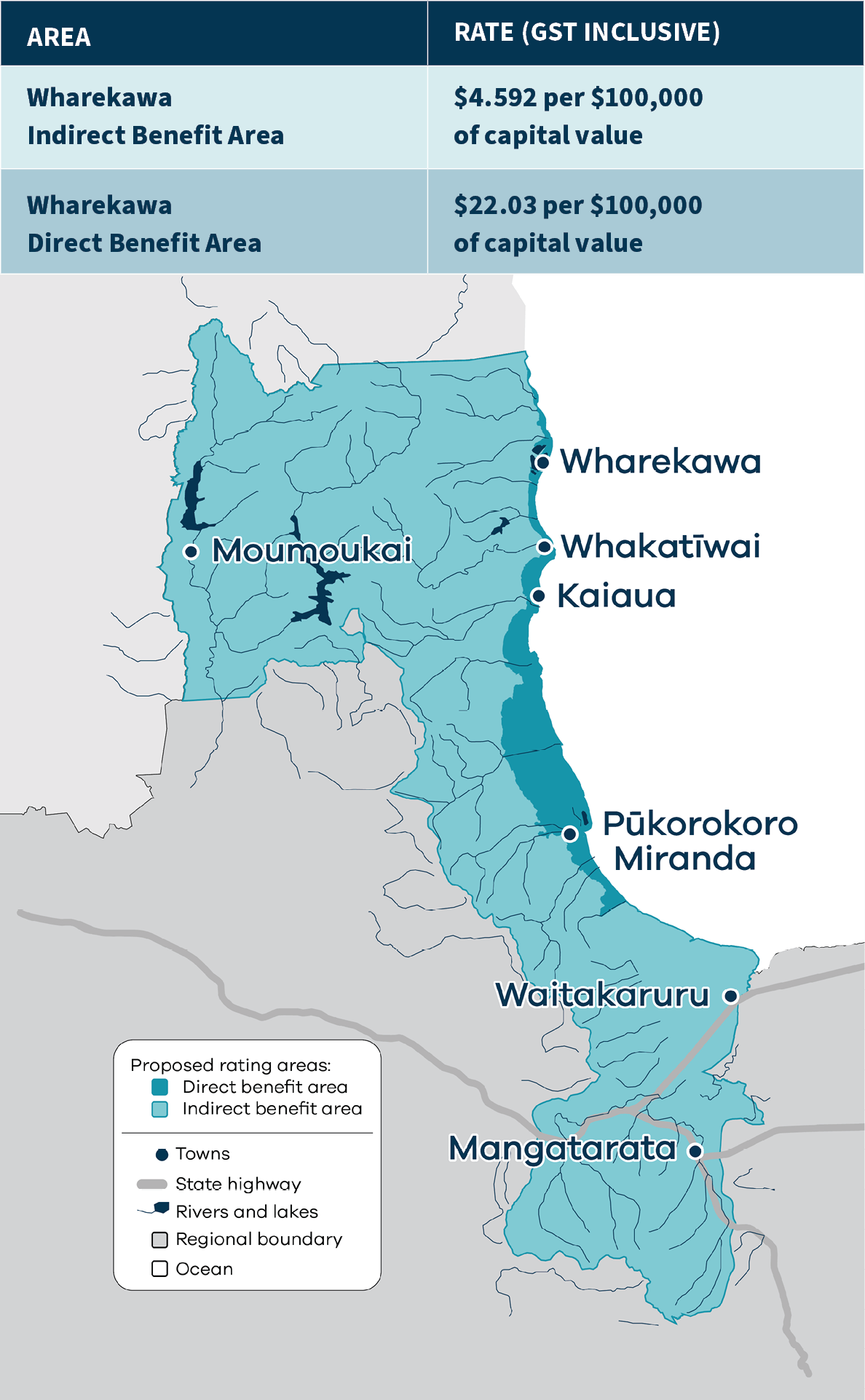When it comes to deciding what mahi (work) we’ll carry out in each year, we take account of the six strategic priorities that form part of our strategic direction – Takatū Waikato | Making a Stand for the Waikato. A focus on wellbeing and how we respond to climate change is woven through all our work.
During our 2025/26 Annual Plan consultation in April, we sought your views on a number of matters, including rating for public transport and a new programme of work to improve the Wharekawa Coast’s resilience to extreme weather events.
With cost-of-living pressures top of mind, councillors focused on delivering a fiscally responsible budget while continuing to align with the programme signalled in our 2024-2034 Long Term Plan.
The process resulted in about a 5.7 per cent increase in total rates revenue from current ratepayers, which was significantly lower than the 8.6 per cent signalled through the 2024-2034 Long Term Plan. Individual increases may vary depending on the location of a property, its value and the services that it receives.
We’ll spend around $222.2 million in 2025/26 to support a healthy environment, vibrant communities and strong economy. Of that spend, around $153.6 million is funded by you, our ratepayers – the rest comes from things like fees and charges, government grants and investment income.
It’s your Waikato and we want you to be informed on how this money is spent. So, let's take a look at the types of work we do and some of the key projects we'll be working on in 2025/26.
![]()
Ngā ara hono ā-rohe
Regional transport connections
$64.6 million
Most rates funding in this area is targeted, so what you pay reflects the transport services in your area. A significant amount of our transport funding comes from central government through the Regional Land Transport Plan (RLTP) process.
With key partners, we provide public transport services so Waikato residents and visitors can access education, employment, healthcare and social opportunities. We also help reduce emissions and shape the future of our towns and city by developing mass transit solutions and reducing reliance on low-occupancy vehicles.
We oversee our regional transport network and plan its future, including preparing the RLTP and Regional Public Transport Plan (RPTP). These blueprints coordinate the Waikato’s transport network across district and city boundaries and secure critical funding from central government for the whole region.
 Pūtaiao, kaupapahere me te mōhiohio
Pūtaiao, kaupapahere me te mōhiohio
Science, policy and information
$36.5 million
We collect, manage and share environmental, social, economic and geospatial data and information for the Waikato region. We monitor key indicators like air and water quality and maintain regional state of the environment information for the public to use.
Our work ensures we can all access high-quality, consistent information that shows how the environment is changing over time.
This information informs the way we manage natural resources and create regional policy. We develop and implement the Waikato Regional Policy Statement, facilitating regional spatial thinking and urban growth management, and we coordinate responses to resource management system reform.
This area is mostly funded through general rates.
 Te Whakahaere ā-tōpū i te rauwiringa wai
Te Whakahaere ā-tōpū i te rauwiringa wai
Integrated catchment management
$37.7 million
Catchments are areas of land that drain rainfall, surface water and ground water into a common water system, such as a river or stream.
We oversee and protect the complex ecosystems within our regional catchments. We promote, plan and implement priority restoration projects, carrying out riverbank stability works to improve stream flow, controlling pests and fencing and planting key areas of land. This work helps to enhance water quality and protect valuable soils.
We also support iwi, landowners and community groups with funding and technical advice to support voluntary initiatives that improve environmental outcomes.
This area is funded through both general and targeted rates. For example, the rate you pay for the catchment and river work we do depends on where you live and the unique needs of your area. Council staff also work to secure central government funding for activities like planting, pest management and erosion control.
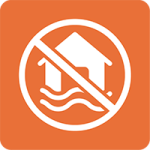 Ngā mahi hei ārai, hei ārahi hoki i ngā waipuke
Ngā mahi hei ārai, hei ārahi hoki i ngā waipuke
Flood protection and control works
$33.9 million
Our flood schemes protect 3000 km2 of land – 12 per cent of the region – from flooding, including $19 billion of property that supports agricultural and economic activity worth around $2.2 billion a year.
We provide communities with an agreed level of protection from floods by operating, maintaining and renewing flood protection assets, including stopbanks, floodgates and pump stations.
This work reduces the risk to life, property and critical infrastructure (some of which is of national significance), supports economic productivity and improves the resilience of the region’s essential services.
We also manage river systems by clearing obstructions and controlling erosion, and our 92 land drainage schemes support pastoral farming in areas across the region.
Targeted rates provide most of the funding in this area. Your rates assessment notice may name a catchment scheme, such as Waikato-Waipā, Waihou or Piako River, that supports your area.
 Te Whakamahinga o te taiao
Te Whakamahinga o te taiao
Resource use
$31.9 million
We’re responsible for processing, issuing and monitoring resource consents under the Resource Management Act, and consents under the Building Act for large dams. We proactively monitor several higher-priority Regional Plan permitted activity rules. We investigate serious breaches of environmental and maritime regulations and seek to resolve non-compliance. We receive and respond 24/7 to calls from the community reporting environmental incidents. And we support the rural sector.
These services enable us to strike the balance between supporting the proactive use of the land and water for the benefit of our communities and economy, while also protecting our valuable natural resources for generations to come.
Our maritime services team is responsible for managing coastal and inland water safety by maintaining navigable waterways. They promote better boating practice and monitor adherence to our Navigation Safety Bylaw for the safety and benefit of recreational and commercial users right across the region.
We also deliver education services focused on waste prevention, Enviroschools, Kura Waitī ki Kura Waitā and a youth and secondary programme to empower environmentally conscious communities and future kaitiaki.
This area is funded through general and targeted rates as well as consent fees and charges paid by consent applicants and consent holders.
 Kiritaki, hapori, me ngā ratonga
Kiritaki, hapori, me ngā ratonga
Customer, community and services
$8.4 million
Councils are democratic institutions. Our people work to ensure our council procedures comply with relevant legislation and Waikato ratepayers can engage fully and fairly in our decision making processes.
We are continuing to improve our customer service capability, so our customers find us welcoming, responsive and connected, and we are working to attract and retain great staff and improve our workforce capability.
The Waikato region is the fourth largest in the country (25,000 km2), so we maintain offices in Hamilton, Whitianga, Paeroa and Taupō, as well as a network of depots near remote locations where our operational work is needed. We also oversee the distribution of discretionary grant funds to support organisations in our community whose mahi (work) aligns with our own goals.
This area is mostly funded by general rates.
 Mōreatanga ā rohe me te whakarata ohotata
Mōreatanga ā rohe me te whakarata ohotata
Regional hazards and emergency response
$2.8 million
We’re responsible for ensuring we have arrangements, standards and processes for emergency response and that emergency management staff have the capability and resources to respond to an emergency event and ensure the best outcomes for the community. We identify at-risk areas and provide strategic information and advice to district councils, the Waikato Civil Defence and Emergency Management (CDEM) Group and landowners.
This helps the region prepare for and avoid hazards – and minimise the damage when emergency events occur. We’re also working to better understand the projected impacts of climate change and help people make informed decisions about land use in hazard-prone areas.
Work in this area is mostly funded through general rates.
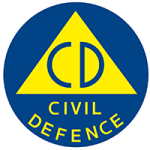 Te Rakau Whakamarumaru ā Rohe o Waikato
Te Rakau Whakamarumaru ā Rohe o Waikato
Waikato Civil Defence and emergency management
$4.5 million
Waikato Regional Council collects the rates that fund the Waikato Civil Defence Emergency Management Group.
To prepare for significant or complex emergencies, the group supports and coordinates all local authorities in the Waikato region, along with the emergency services and other key partners, to ensure those organisations and our communities have the capacity and capability to respond to and recover from emergency events. This includes identifying and assessing risks and, where appropriate, supporting agencies to reduce those risks.
The group also supports partners through increasing consistency in training, systems and processes, and supporting our communities through clear and consistent public information and public education. During significant or complex emergencies, they lead, coordinate or support the operational responses and subsequent recovery activities.
This area is funded by the Civil Defence and Emergency Management targeted rate. All Waikato ratepayers pay the same amount, which goes directly to the Waikato Civil Defence Emergency Management Group.
As you can see, there’s lots planned for 2025/26. But we can’t make it happen on our own. We look forward to working together with our partners, communities and stakeholders to make the Waikato region even better.
Find out more about the work we’ll be doing in the year ahead, in our 2025/26 Mahere ā-Tau Annual Plan.
And, if you want to know more about different types of rates and how they are applied, visit our rates general information and FAQs page.


